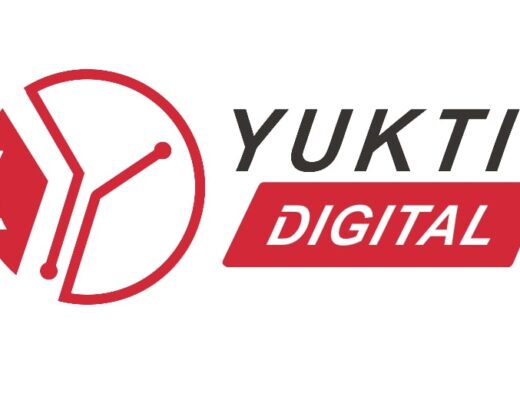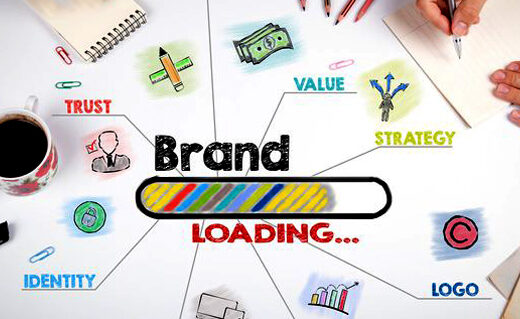Customers now seek organizations that are cutting-edge. They don’t fall for gimmicks or are deceived by over-the-top offerings. As a result, companies and startups today need to have a distinctive branding strategy that enhances the consumer experience. You may create a distinctive brand identity by doing this, which will help you stand out.
Each business has a problem in maintaining brand consistency across all marketing touchpoints, much alone each social network. How can you ensure that the voice of your business in TV advertisements is reflected in the tone of your email marketing? If at all, how do you distinguish between the two audiences while speaking? How do you make sure that even if it’s their first time seeing you on social media, people can still know your brand?
A brand is so much more than a cover picture, a logo, or a set of colors. By maintaining a consistent attitude throughout all of your contacts with customers, you can build a brand. A brand is how you want to make them feel. Companies like Yukti Digital will assist you in learning how to establish a consistent brand across various social media platforms.
The Value of Logos in Building Brand Identity
Every business owner wants to differentiate their enterprise from the competition and generate a sizable profit. In this competitive industry, you must constantly stay one step ahead of your competitors if you want to hit an outstanding milestone. An organization’s appealing logo has the potential to have a big impact on the market and attract new customers.
An effective logo is a crucial part of a company’s identification and representation of the business. Every design aspect, including color, typeface, and form, speaks extremely interestingly to the business personality. People may learn about a brand’s value and personality via a custom logo. For every company, logo design is crucial. It indicates your company’s name and where you stand in the market.
Reminding people of this is important in today’s world, says the logo. If you look closely, you’ll see that logos only take up a little amount of room on your website or app—just a few tiny pixels in the corner—but they really take up a lot more room in people’s minds. The logo must be adaptive, versatile, and dependable.
Simply said, the logo shouldn’t be beautiful in order to get attention from the public. However, it should also make clear how much value you are bringing to people’s lives and how your brand stands out in this competitive market. It ought to reflect the culture and values of your company.
Brand logos frequently play a significant role in creative tactics. The only company where the packaging is more recognizable than the logo is undoubtedly Tiffany. The brand has worked hard to maintain consistency and infiltrate its values into people’s minds for more than a century. Tiffany dominates the engagement ring market thanks to its superb diamonds, exceptional settings, and trademark Tiffany blue box. The value of the Tiffany & Co. trademark increased from $5.48 billion in 2021 to about $6.55 billion in 2022.
Graphic Design in Digital Marketing: Its Importance
Graphic design is an art form capable of delivering strong messages, not only beautiful images. Graphic designers may produce eye-catching works of art that are powerful by deftly fusing carefully selected pictures, strong headlines, and beautiful presentation packages.
Graphic design is a potent tool for conveying important ideas and is not only about aesthetics. Unfortunately, if any component of the package is overlooked or handled improperly, it may significantly limit its impact and miss its target audience. Carefully crafted visual components and astute marketing techniques must be blended into one gorgeously created concept in order to effectively communicate your thoughts.
Any corporate organization may utilize graphic design to visually express thoughts and ideas, from branding to digital marketing. In today’s evolving marketplace, where transactions may take place both online and offline, excellent design can differentiate even a tiny company from a well-known brand. You simply need to glance at Instagram to see the inventiveness that tiny artisan firms are using to set up shop and offer their goods and services in order to attract customers.
We can all agree that attractiveness is alluring, and graphic design communicates attractiveness to entice the intended audience. There is very little window of time for an advertisement, email, or website to capture the audience’s attention before they go on to the next item, thus advertising is not simply about aesthetics. They will pause to consider the message if anything inside that window of time prompts them to look again (a graphic, a headline). Although an audience may more easily focus on the content in a marketing campaign with good design, they are first drawn in by the captivating images.
Who can forget Apple’s “Think Different” marketing initiative? As Steve Jobs marketed the idea of being special enough to acquire an Apple product, it transformed the IT industry and established a cult-like fan following. Apple Inc. ran a well-known advertisement narrated by Jobs from 1997 until 2002. The advertising campaign garnered numerous honors and launched Apple into the spotlight; since then, it has maintained its luster. One of the most valuable brands in the world is the IT giant. Apple’s initial marketing brochure stated that “Simplicity is the ultimate sophistication.” Apple has done well by using unconventional thinking and keeping things straightforward. The corporation became the first in the world to reach a market valuation of over $3 trillion thanks to this premise.
Print Marketing’s Importance to Brands
Print media acts as a catalyst for providing your target market and prospects with a brand experience that internet advertising just cannot match. In order to effectively communicate your values to your devoted clients, it helps remove communication barriers between you and them.
Your readers will feel satisfied and legitimate when they see your work on paper. Readers are unlikely to return to your content pieces in digital methods. Additionally, a lot of the material on digital platforms is overlooked in the era of the information explosion. Print ad designs, however, are useful for getting readers to pay attention and take in the information.
It necessitates real estate, i.e., it occupies a certain area in your surroundings. The printed material will stay where it is until it is picked up again to be read and seen. This provides print marketing with some legitimacy and offers your company a competitive edge.
Coca-Cola is a well-known brand that understands how to appeal to consumers’ emotions. The soft drink company has made use of the need to attract customers with campaigns like “Share a Coke” and “Open Happiness.” Coca-Cola specifically targeted millennials with their “Share a Coke” campaign, encouraging consumers to buy Coke bottles and share the names of the friends and family members they would like to share it with.
Raise Awareness of Brands
Online marketing is really popular right now. It seems that marketing has really gone digital, whether a company is advertising itself on social networking platforms or via internet advertisements. However, offline advertising may be just as successful in expanding a company’s market and raising brand recognition.
Any kind of marketing that is not conducted online is, in a nutshell, considered offline marketing. This covers a broad variety of media and forms, including billboards, print advertisements, and radio and TV commercials.
The first step in developing an offline marketing strategy is to design a test campaign. This includes creating a budget, creating the ad text, and creating the actual commercial. It’s crucial to keep in mind that not all offline marketing is restricted to physical spaces; often, these advertisements are combined with digital advertising in the form of banner ads or social media postings.
It’s time to look around for ad placement when you’ve prepared your ad and budget. Some offline marketing venues are more expensive than others; a billboard, for instance, is much less expensive than a TV ad. The next stage is deciding where to run your ad—geographically, and/or at what time of day—once you know how much you have to spend.
Tracking the effects of your advertisement and calculating your return on investment, or ROI is the last phase. Offline advertising makes it difficult to get precise figures, so you’ll need to examine some useful measures, such as impressions (the number of individuals who viewed the advertisement) and cost per impression (how much each viewer cost). Additionally, spend some time evaluating your prices in light of related web advertisements.
Dove took advantage of the findings to alter public image and increase awareness of problems with self-esteem among young girls and adults. Dove’s sales soared, and the global response to the campaign was overwhelmingly positive. Sales were approximately $2.5 billion in the first year of the campaign, but as of now, they have surpassed $4 billion, generating income and sparking societal change.
Get Started Today
The creative campaign had such a profound effect that people still think about it today. It also helped launch a number of initiatives to help the next generation develop a body-positive mindset.
The finest creative approaches from companies such as Yukti Digital assist a business in standing out from its rivals, promoting its values, and establishing an emotional connection with consumers. The creative approach for your brand makes sure that its message is understood by a wide audience and is in line with your overarching objectives. It enters clients’ minds and offers a solid ROI in addition to business growth.






